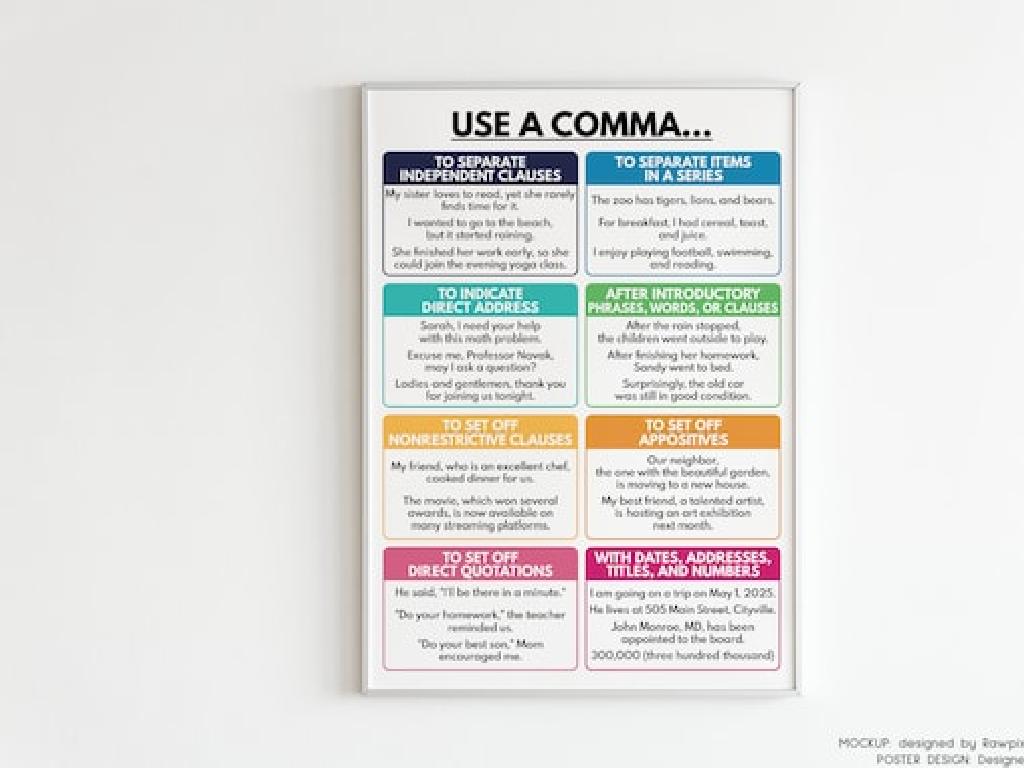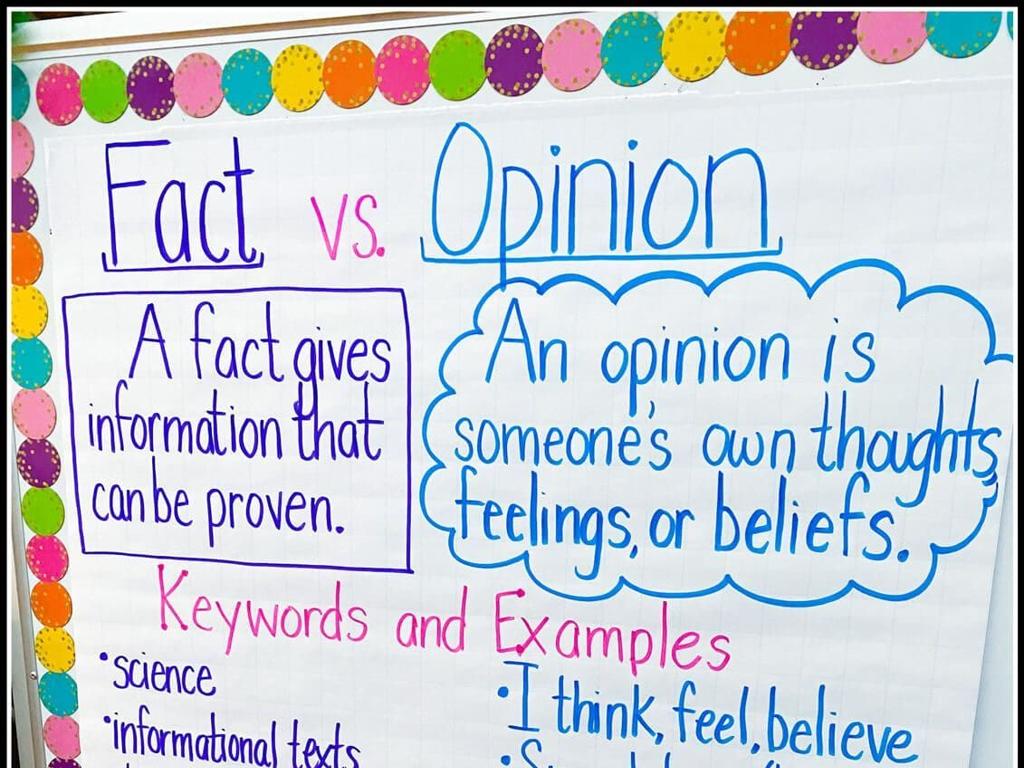Number Sequences Involving Decimals
Subject: Math
Grade: Fourth grade
Topic: Add And Subtract Decimals
Please LOG IN to download the presentation. Access is available to registered users only.
View More Content
Introduction to Decimal Sequences
– Welcome to decimals!
– Adding & subtracting decimals
– Just like whole numbers, but with a dot!
– What’s a decimal sequence?
– It’s a series of numbers with decimal points.
– Exploring decimal patterns
– Find the rule that creates the sequence.
|
This slide introduces students to the concept of decimal sequences. Begin by welcoming them to the world of decimals, ensuring they understand that decimals are simply an extension of whole numbers with a ‘dot’ or ‘point’ to represent values less than one. Explain the basic operations of addition and subtraction with decimals, using examples like money for practical understanding. Define a decimal sequence as a list of numbers that have a specific pattern involving decimals. Encourage students to look for and understand the rule that governs the sequence, such as adding 0.5 or subtracting 0.3 in each step. Use visual aids or manipulatives if possible to help students grasp the concept of decimal places and their significance in sequences.
Understanding Decimals
– What is a decimal?
– A decimal represents a part of a whole
– Decimals in whole numbers
– The role of the decimal point
– It separates the whole number from the fractional part
– Example: 0.5 as a decimal
– 0.5 means half, just like 1/2
|
This slide introduces the concept of decimals to fourth-grade students. Begin by explaining that a decimal is a way to represent parts of a whole number, similar to fractions. Emphasize the importance of the decimal point, which comes after the whole number and is crucial for showing values less than one. Use the example of 0.5 to illustrate a common decimal, explaining that it is another way to say ‘half’ or 1/2. Encourage students to think of money, such as half a dollar, to make the concept relatable. This foundational understanding will help them grasp more complex decimal sequences in future lessons.
Recognizing Decimal Sequences
– Understanding number sequences
– A sequence is an ordered list of numbers
– Decimal points in sequences
– Each number in the sequence includes a decimal
– Examples of decimal sequences
– 0.5, 1.0, 1.5, 2.0 is a sequence adding 0.5
– Practice finding the pattern
– Look for and describe the rule in a sequence
|
This slide introduces students to the concept of number sequences with a focus on decimals. Start by explaining what a sequence is and how it is simply a set of numbers arranged in a particular order. Emphasize that in decimal sequences, each number will have a decimal point, and this can sometimes represent parts of a whole. Show examples of decimal sequences and ask students to observe the pattern in how the numbers change. For instance, in the sequence 0.5, 1.0, 1.5, 2.0, we are adding 0.5 to each number to get the next. Encourage students to practice by finding the pattern in different sequences and to be ready to explain the rule that creates the sequence.
Adding Decimals Step by Step
– Align the decimal points
– Stack the numbers so decimals are in a vertical line
– Add like whole numbers
– Ignore the decimals and add the digits
– Decimal point in the sum
– Put the decimal in the answer under the lined-up decimals
|
When teaching students to add decimals, emphasize the importance of lining up the decimal points to ensure accurate placement of digits. Compare this process to stacking coins of the same size, where each coin represents a place value. After aligning the decimals, instruct students to add the numbers as if they were whole numbers, ignoring the decimal point during addition. Finally, remind them to place the decimal point in the answer directly below the other decimal points to maintain the correct value. Use examples with different numbers of decimal places to illustrate these steps and provide practice problems for students to apply what they’ve learned.
Subtracting Decimals Step by Step
– Align the decimal points
– Make sure all decimals are in a vertical line
– Subtract like whole numbers
– Ignore the decimals and subtract normally
– Decimal point in answer below
– Place the decimal in the result to match the alignment
– Check your work
|
When teaching students to subtract decimals, start by emphasizing the importance of lining up the decimal points. This ensures that the digits are in the correct place value. Students should then subtract the numbers as if they were whole numbers, ignoring the decimal point during the calculation. After finding the difference, they must remember to put the decimal point in the answer directly below the other decimal points to maintain the correct value. Encourage students to double-check their work by adding the difference to the smaller number to see if it equals the larger number they started with.
Creating a Decimal Sequence
– Starting your decimal sequence
– Pick a decimal to begin, like 0.5 or 3.7
– Choosing your step value
– Decide how much to add, maybe 0.2 or subtract, like 0.3
– Filling in missing decimals
– Use your step to complete sequences: ?, 1.1, 1.3, ?
– Practice with examples
– Try creating sequences: Start with 2.5, add 0.5. What are the next 3 numbers?
|
This slide is aimed at helping students understand how to create a sequence involving decimals. Begin by choosing a starting number, which can be any decimal. Then, decide on a ‘step’ value, which is the amount to add or subtract each time to create the next number in the sequence. Provide practice opportunities by giving sequences with missing numbers for students to fill in, reinforcing the concept of a constant step. Encourage students to create their own sequences and share with the class for further practice. This activity will enhance their understanding of decimal sequences and prepare them for more complex operations with decimals.
Patterns in Decimal Sequences
– Identify decimal sequence patterns
– Look for the rule that numbers follow, like adding 0.5
– Predict the next decimals
– Use the rule to find what number comes next
– Common decimal patterns
– Patterns like adding 0.1, 0.2, or subtracting 0.3
– Practice with examples
– Try finding patterns in sequences like 3.1, 3.2, 3.3, ?
|
This slide introduces students to the concept of identifying and predicting patterns in decimal sequences. Start by explaining that a pattern is a rule numbers follow in a sequence. Show how to use this rule to find the next number. Provide examples of common patterns, such as consistently adding or subtracting the same decimal amount. Encourage students to practice with provided sequences and come up with their own. Reinforce the concept by having students explain the pattern they’ve identified and how they used it to predict the next numbers.
Class Activity: Decimal Sequences
– Pair up and explore decimal sequences
– Determine the next number in sequence
– Use addition or subtraction to find the next number
– Share your sequence with the class
– Explain the discovered pattern
– Describe how you figured out the next number
|
This interactive class activity is designed to help students understand decimal sequences through collaboration and discussion. Students will work in pairs to analyze a given sequence of numbers with decimals and predict the next number by identifying the pattern, whether it’s adding or subtracting. Afterward, they will present their findings to the class, explaining the logic behind their conclusions. For the teacher: Prepare several sequences with varying patterns for the students to solve. Encourage them to think about the steps they take to find the next number and to articulate their reasoning clearly. Possible sequences could include adding 0.5, subtracting 0.2, or alternating between adding 0.3 and subtracting 0.1. This will not only reinforce their understanding of decimal operations but also enhance their communication skills.
Conclusion & Homework: Decimal Sequences
– Recap: importance of decimal sequences
– Homework: craft a decimal sequence
– Choose any starting decimal, then continue the sequence
– Discover the pattern in your sequence
– Look for the rule that creates the sequence
– Share your findings next class
|
As we wrap up today’s lesson on decimal sequences, remind students of how these patterns appear in various aspects of daily life, such as money and measurements. For homework, students should create their own sequence starting with any decimal point number and then add or subtract a consistent decimal to form a pattern. Encourage them to identify the rule they used to create the sequence. In the next class, students will have the opportunity to share their sequences and explain the patterns they discovered, reinforcing their understanding of decimal sequences and their ability to articulate mathematical concepts.






